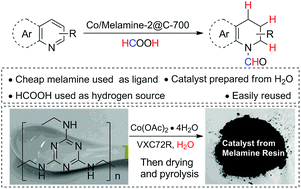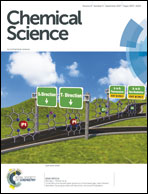Selective cobalt nanoparticles for catalytic transfer hydrogenation of N-heteroarenes†
Abstract
Nitrogen modified cobalt catalysts supported on carbon were prepared by pyrolysis of the mixture generated from cobalt(II) acetate in aqueous solution of melamine or waste melamine resins, which are widely used as industrial polymers. The obtained nanostructured materials catalyze the transfer hydrogenation of N-heteroarenes with formic acid in the absence of base. The optimal Co/Melamine-2@C-700 catalyst exhibits high activity and selectivity for the dehydrogenation of formic acid into molecular hydrogen and carbon dioxide and allows for the reduction of diverse N-heteroarenes including substrates featuring sensitive functional groups.



 Please wait while we load your content...
Please wait while we load your content...